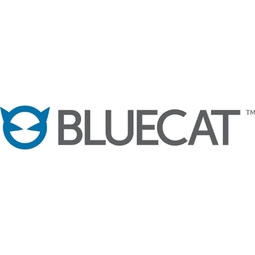公司规模
Large Corporate
地区
- America
国家
- United States
产品
- BlueCat’s DNS Integrity
技术栈
- DNS Management
实施规模
- Enterprise-wide Deployment
影响指标
- Productivity Improvements
- Digital Expertise
技术
- 应用基础设施与中间件 - 数据交换与集成
适用行业
- 国家安全与国防
适用功能
- 商业运营
用例
- 基础设施检查
服务
- 系统集成
- 软件设计与工程服务
关于客户
BlueCat was approached by one of the U.S. Department of Energy’s complex of national laboratories. The laboratory performs work in each of the strategic goal areas of DOE: energy, national security, science and environment. The laboratory is the nation’s leading center for nuclear energy research and development, with 3,900 employees, and a total business volume of $917.1 million.
挑战
The Laboratory conducts scientific research on highly sensitive technical areas, and as such its network requires a unique architecture. The vast majority of the Laboratory’s workforce is comprised of U.S. citizens, but foreign scientists also work at the lab through cooperative projects and scientific exchange programs. The Laboratory’s network administrators segmented their network to ensure that information was unable to move from the protected enclave of U.S. citizen workers to the enclave used by foreign nationals. This created an administrative headache, however, as the DNS for both areas had to be managed separately under the Microsoft DNS the lab was using. Spreadsheets were used to keep track of IP addresses and host records, but this was hardly a failsafe method – manual errors frequently caused network outages and increased overall operational risk. Split administration also lengthened the time it took network administrators to respond to help desk tickets. With a constant flow of foreign researchers and guests, adding and deleting host records took a great deal of time and energy away from more pressing tasks.
解决方案
The Laboratory decided to implement BlueCat’s DNS Integrity solution to centralize and automate the management of its core DNS infrastructure. The BlueCat migration team worked closely with Laboratory administrators to capture, organize, and rationalize the DNS data from each operational enclave. Setting aside blocks of IP addresses for each side of the Laboratory’s network, the BlueCat migration team effectively segmented the enterprise while providing the ability to manage DNS resources from a single portal.
运营影响

Case Study missing?
Start adding your own!
Register with your work email and create a new case study profile for your business.
相关案例.

Case Study
Data Capture for Afghanistan Forces
Electronic equipments on the field of Afghanistan provided information on the status of the vehicle and to identify potential threats surrounding it to the British Force. The monitoring and interpretation of this data requires robust and sophisticated digitization for data capture and communication.
Case Study
Enhancing Security and Compliance in Remitly's Global Money Transfer Service with Fastly
Remitly, an online remittance service, was faced with the challenge of securing its proprietary global transfer network. The company needed a security solution that could meet PCI requirements and protect customers' sensitive transactions through its mobile application. The solution had to be capable of defending against new and emerging attack types without impacting performance. Remitly also had to deal with irregular traffic patterns, such as a sudden spike in account transfers from a small network segment on the Pacific coastline of South America. The company needed to determine in real time whether such traffic indicated an attack or valid requests. A traditional web application firewall (WAF) would not be able to distinguish this traffic, potentially leading to customer frustration if the IP was blacklisted.

Case Study
Major Aerospace Company Automates Asset Management
The O&M division of an aerospace and global security company was using spreadsheets to manually track more than 3,000 assets assigned to students and staff. Maintaining audit trails for this high volume of equipment became increasingly time-consuming and challenging. The chore involved knowing precisely what equipment was on hand, what had been issued, its location and the name of the custodial owner of each item. Every aspect of this task was carried owner of each item. Every aspect of this task was carried out by individuals with spreadsheets. Manually documenting the full lifecycle of each asset added to the burden. This included tracking maintenance requirements and records, incidents and damages, repairs, calibrations, depreciation, and end-of-life data.

Case Study
Securing a Large Data Center in the EMEA Region: An IoT Case Study
A leading data-center operator in the EMEA region, with multiple facilities spanning over 25,000 square meters, faced significant security challenges. The operator experienced interruptions in their internal IT network due to unsupervised work of third-party technicians. Despite having a high-end building control system that provided 24x7 monitoring and control to all the building’s infrastructure, the data center was vulnerable from a cyber perspective as it was connected to the IT network infrastructure. The operator launched an urgent OT cyber security project that included both IT-OT network segmentation and OT network asset mapping and anomaly detection. The main objectives were to harden the security of the server systems, secure the facility’s power supply and server cooling system, strengthen the segmentation between building and operational systems, create a visual OT network map, and set up a system for presenting supply-chain attacks that may threaten the data center through equipment vendors’ maintenance activities.

Case Study
Leveraging Graph Technology for Enhanced Cybersecurity: A Case Study on MITRE's CyGraph
MITRE, a federally-funded, not-for-profit company that manages seven national research and development laboratories in the United States, was grappling with the challenge of managing an influx of cybersecurity data. The constant changes in network environments were impacting the security posture of U.S. government agencies. Intrusion alerts, anti-virus warnings, and seemingly benign events like logins, service connections, and file share access were all potentially associated with adversary activity. The cybersecurity researchers at MITRE needed to go beyond rudimentary assessments of security posture and attack response. This required merging isolated data into higher-level knowledge of network-wide attack vulnerabilities and mission readiness. The challenge was not the lack of information, but the ability to assemble disparate pieces of information into an overall analytic picture for situational awareness, optimal courses of action, and maintaining mission readiness. The team also struggled with fully comprehending a given security environment and mapping all known vulnerabilities.

Case Study
Enhancing Security Precision with IoT: A Case Study of Guardsman Group
Guardsman Group, a leading security company in the Caribbean, faced a significant challenge in maintaining the security of its digital infrastructure. The company provides security equipment, personnel, and systems for various businesses across the region. However, one of its offices experienced a security incident that affected all communications at that location. The existing security tools were not sufficient to provide the necessary protection, and it took hours to identify the source of the issue. This incident highlighted the need for a dynamic solution that could proactively identify threats. The company's primary concern was any disruption to its business, as it manages a significant portion of Jamaica's money and cannot afford for its operations to go down.







